While we had spent the previous night in Buenos Aires, we really didn’t tour much beyond the bus ride from the airport. Buenos Aires is the capital city of Argentina having gained independence from Spain in the early 1800’s. It is the largest city in Argentina, and has become quite cosmopolitan. Its center is the Plaza de Mayo, which is lined with stately 19th-century buildings including Casa Rosada, the iconic, balconied presidential palace (from which Eve Perón would wave to the people below). Other major attractions include Teatro Colón, a grand 1908 opera house with nearly 2,500 seats, and the modern MALBA museum, displaying Latin American art.
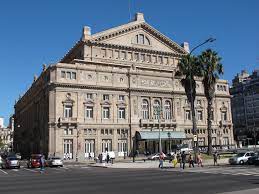
It is known for its preserved eclectic European architecture and rich cultural life. It is a multicultural city that is home to multiple ethnic and religious groups, contributing to its culture as well as to the dialect spoken in the city and in some other parts of the country. This is because since the 19th century, the city, and the country in general, has been a major recipient of millions of immigrants from all over the world, making it a melting pot where several ethnic groups live together. Thus, Buenos Aires is considered one of the most diverse cities of the Americas.
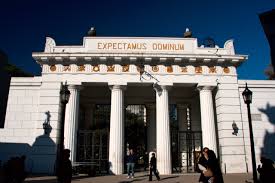
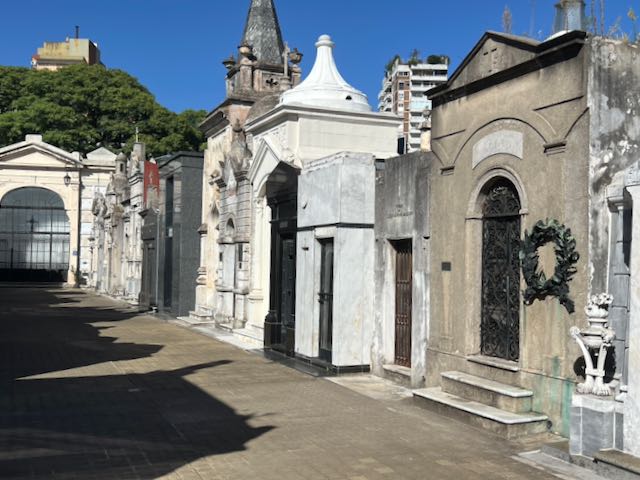
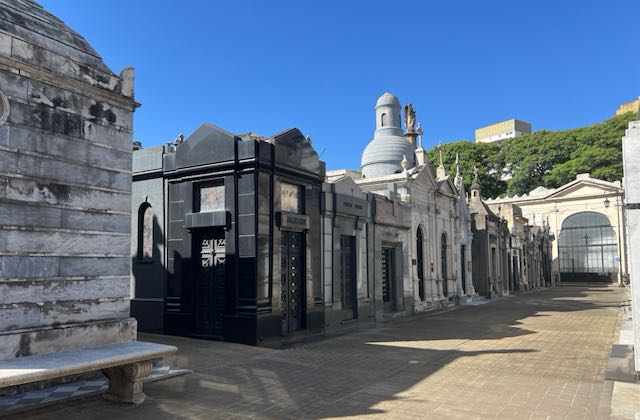
The following morning, back on the bus for a highlight tour of Buenos Aires, our first stop was to visit The La Recoleta Cemetery. This cemetery holds the remains of many notable people including, several presidents of Argentina, Nobel Prize winners and lots of others. However, the tomb that is visited the most often, is for Eva Perón, the former first Lady of Argentina who died in 1952. Her memorial isn’t grand or excessive but part of a Duarte family vault within the cemetery. She was revered by the lower economic classes and helped enact a number of reforms and policies to their benefit. She also helped bring about the passage of Argentina’s women’s suffrage law.
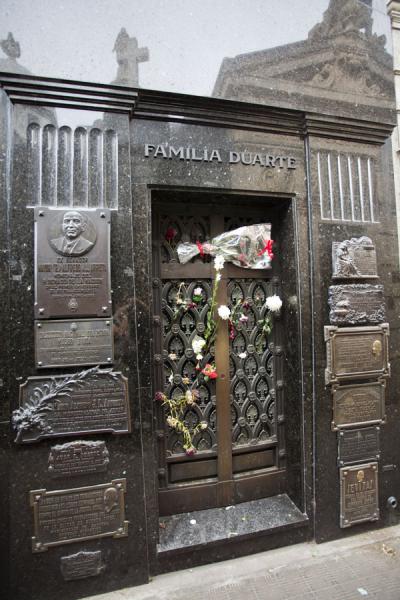
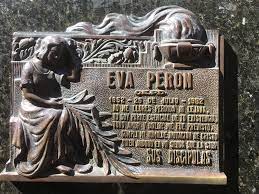
There are many elaborate marble mausoleums, decorated with statues in a variety of architectural styles, including the honeymoon bride. The Bride died while on her honeymoon and this was done to memorialize her for all time.
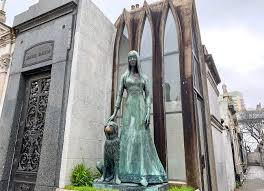
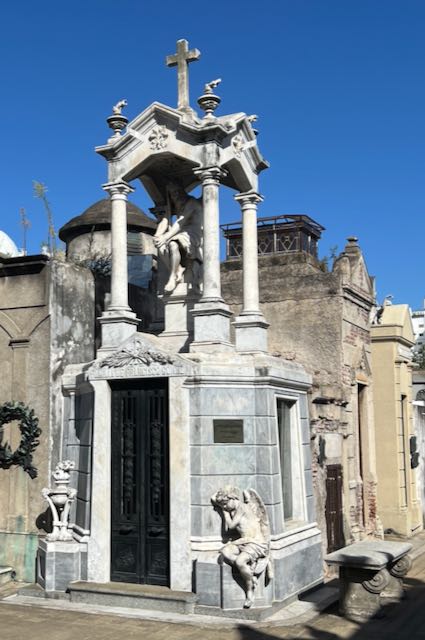

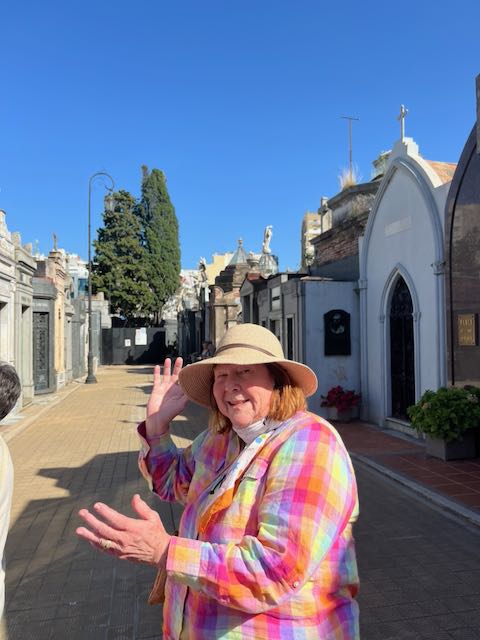
After the visit to the cemetery, we stopped for a coffee and pastry at La Biela – a historic eatery specializing in salads, sandwiches & classic Argentinean mains. It was a nice stop under the old trees with delicious croissants.
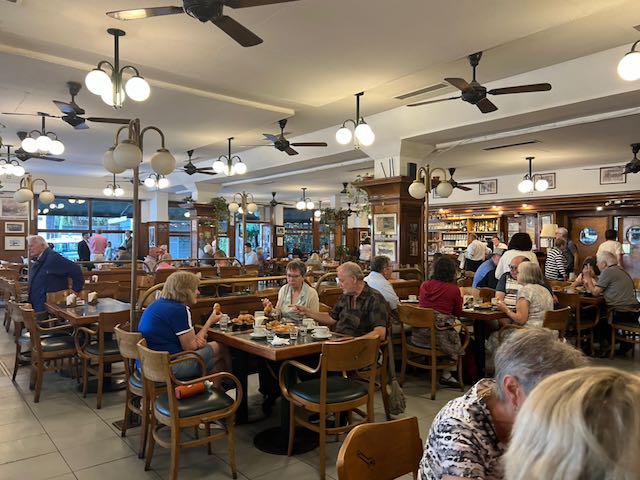
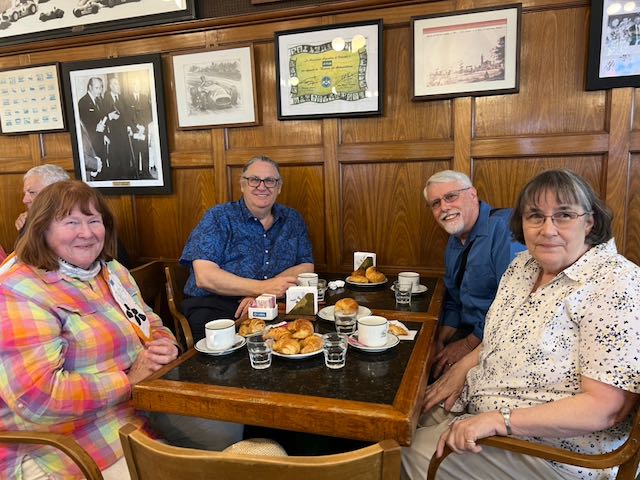
From there onto the bus for more highlights of the city. Our first stop was at Plaza de Mayo to view the various buildings including the presidential palace and Metropolitan Cathedral of Buenos Aires.
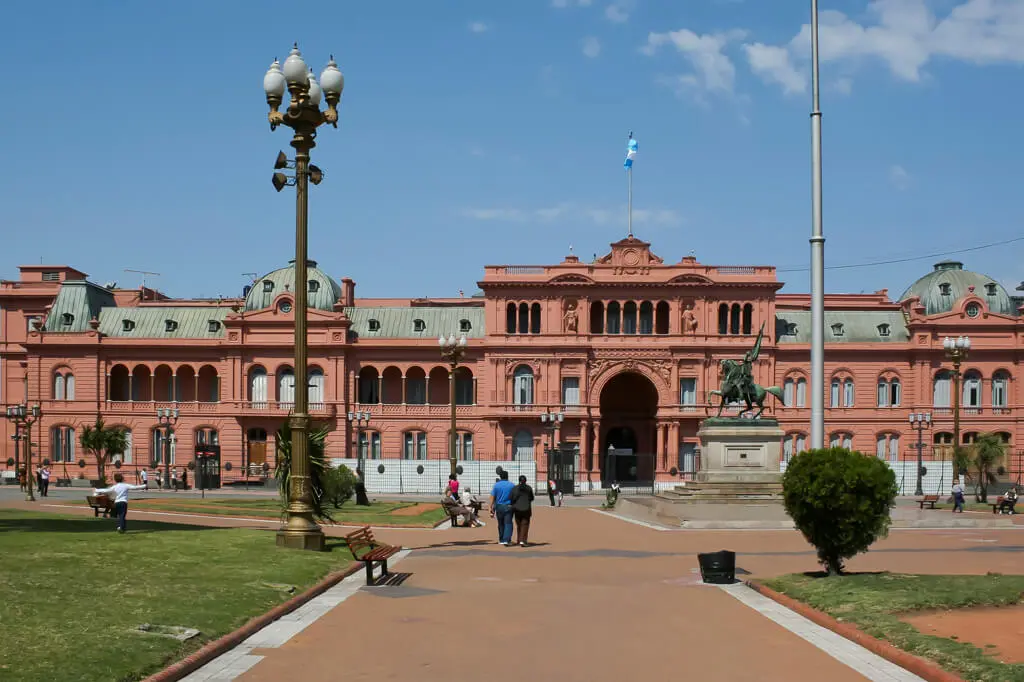
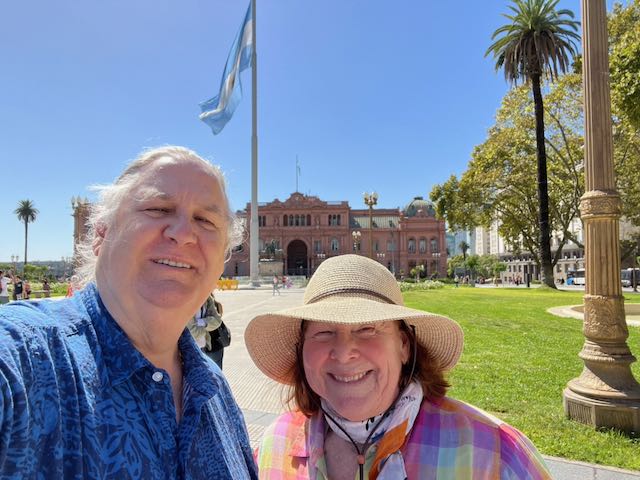
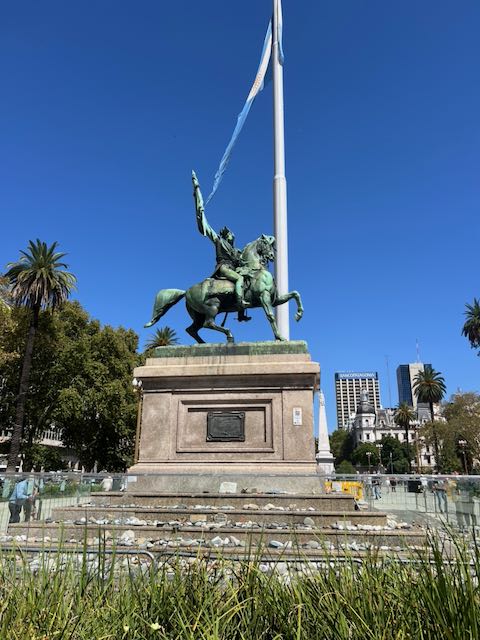
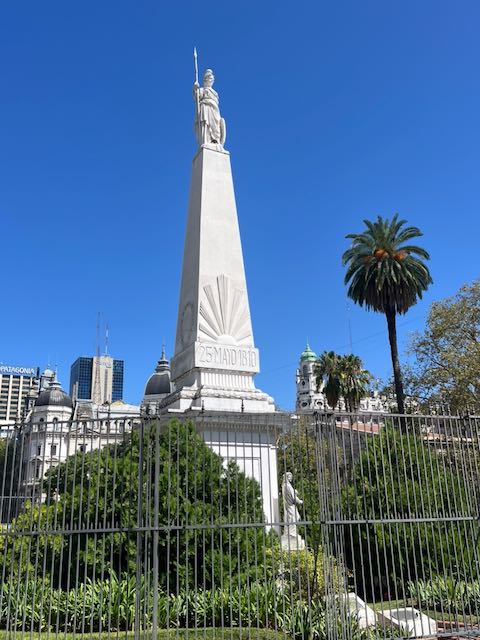
If you look closely, below the horse statue there are hundreds of stones. These were placed there by loved ones as remembrance of those who died during the Pandemic.
You may recall that this was the home church for Pope Francis – who was the Archbishop of Buenos Aires prior to his elevation to Pope.
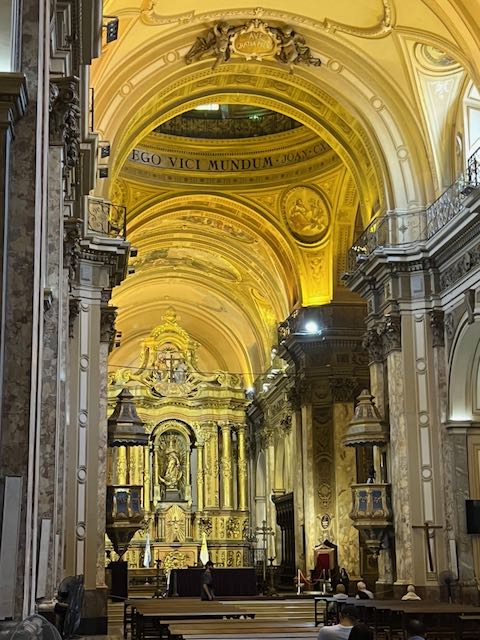
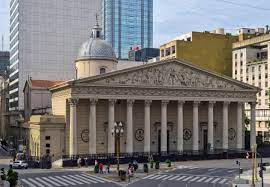

After walking around and taking in the sites, went to La Ventana for lunch and a Tango Show. The La Ventana is clearly the place to go in Buenos Aires to see a tango show. The cellar restaurant was packed to capacity with long family style tables (although we scored a table for four) and waitstaff juggled pasta, beef or chicken brought from stacking carriers. A dulce de leche was finished just as the lights dimmed and the curtain to the side opened on a grand piano, double bass, guitar and an accordion like instrument which set the rhythm for the dancers. Three pairs of dancers appeared with opening moves, gliding and twisting. When the tango singer set the mood, one couple at a time began their play of seductive moves to the music.
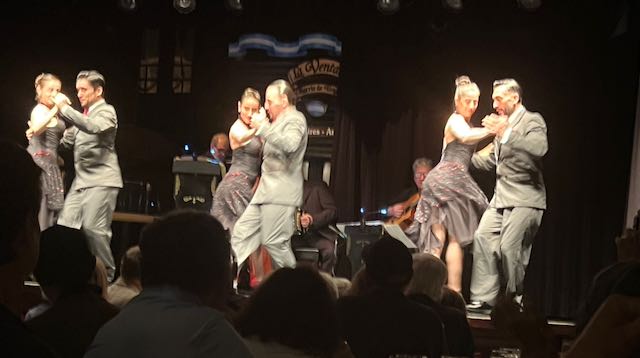
Our guide, Sol, said that the beginnings of the tango are thought to have been brought over by African slaves, and then adapted to the favelas and brothels of the city. The arms and legs of the dancers twist and turn spin and kick as they glide together across the floor.
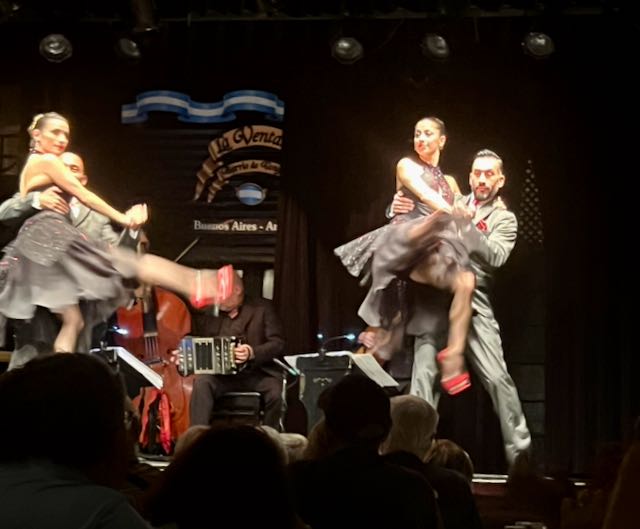
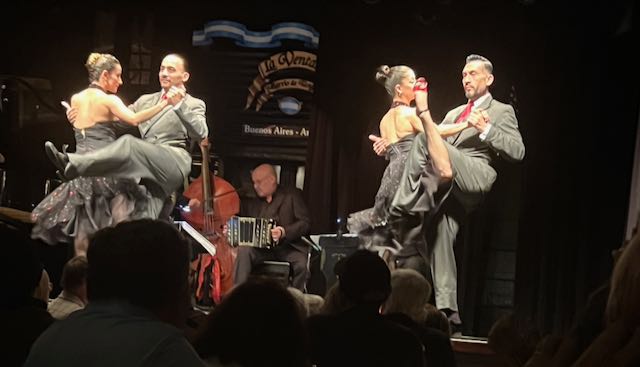
At the sound of drums, El Gaucho came on stage stamping his heels and eventually, both he and his companion Gaucha swung the bolos in rapid wheels, tapping the floor in a rhythm with the drums.

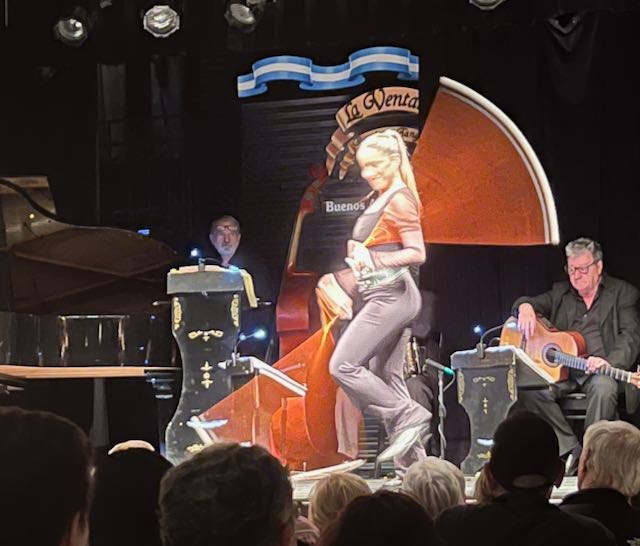
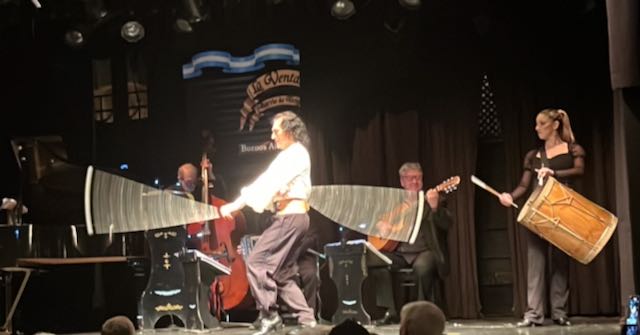
A solo male singer shared the songs of the barrios, and a single spotlighted woman shared “don’t cry for me Argentina” in Spanish.
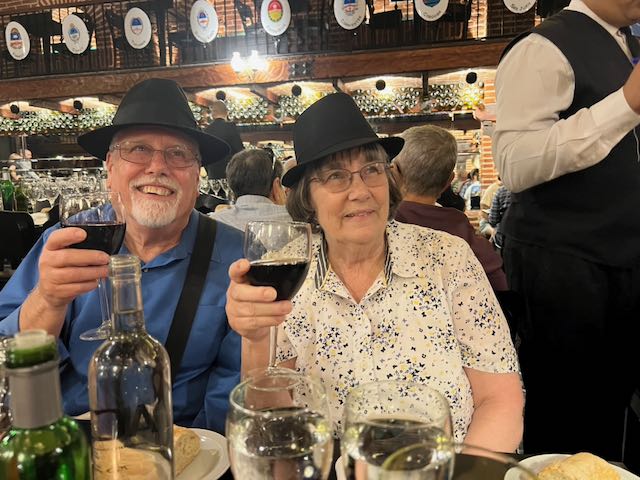
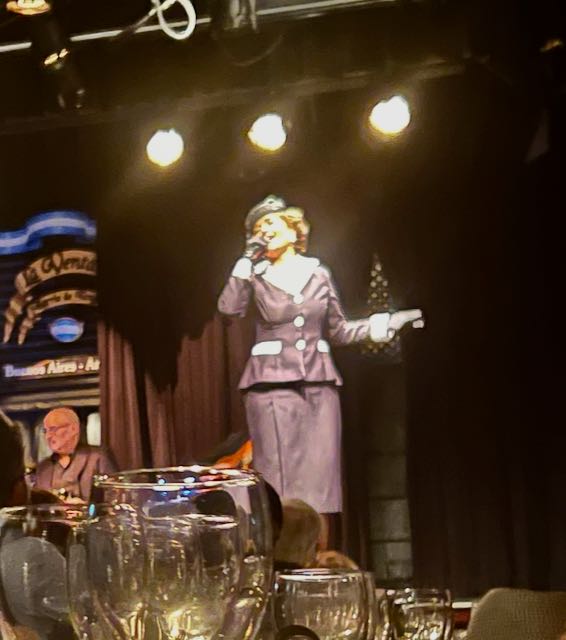
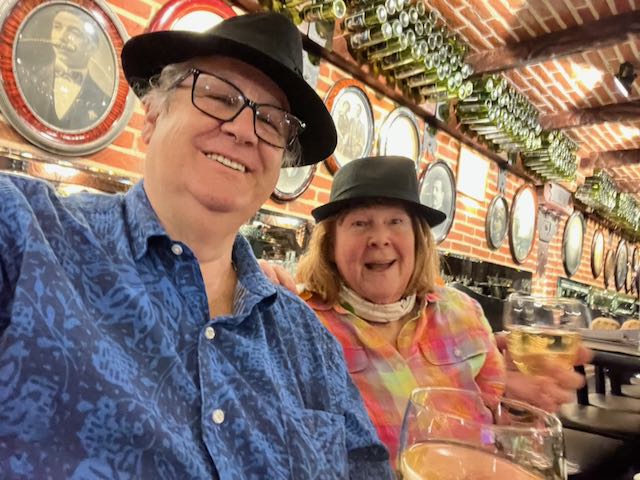
After the show, we motored around looking at various neighborhoods before heading to the harbor to board our ship, Oceana Marina!
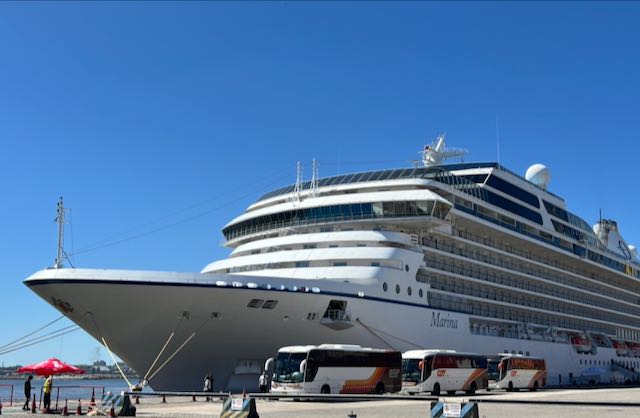
Quite interested to see the beautiful Eva Peron cemetery stone. The dancing pictures are wonderful, you can almost hear the music /singing of the Barrios.
David, your writing flows wonderfully, making the smallest detail interesting. Thank you for taking us along on these adventures.
Loved it!!! Thank you for coming to my hometown!
Such a small world regarding our friendship. I have many of the same photos . We also went to La Ventana. We did go to a gaucho ranch which displayed their magnificent horses and tricks. We were seated at picnic tables with barbecued meat, wines , bread and blood sausage of which I politely no thank you. After lunch we had the option of riding horses and naturally I said let’s go. I did need help getting up and in the saddle. Fortunately, a young, handsome gaucho helped me and off I went. Needless to say, I was nervous but trotted around the ranch with other nervous folks. I did need help getting if the magnificent horse and another young, handsome gaucho assisted me. Such wonderful memories. I am so glad you are enjoying such a wonderful and different area of this big world. Hugs
Looks like fun. Be safe
So lyrical! Who knew?